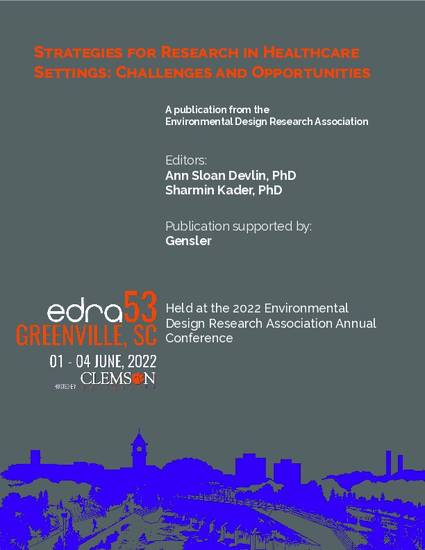
Other
Finding Our Way in the Wayfinding Study: How Laboratory Work Influences a Randomized Controlled Trial
(2021)
Abstract
Methods to measure the impact of environmental features on wayfinding are challenging due to many factors, such as changing environmental conditions and lack of reproducibility. The Wayfinding Study team has worked for a number of years to develop sophisticated methods of measuring both the features of the environment and wayfinding ability. Initial studies conducted were aimed at measuring the types of environmental features, such as color, form, size, and placement, that impacted wayfinding ability. These studies were conducted in virtual reality environments in a laboratory. In addition, eye tracking technology was employed to measure visual fixations onto the environmental features, giving evidence for the types of features that are most engaging. Using results from these laboratory data, the Wayfinding Study Team developed an environmental intervention (special signage and art cues) aimed at improving wayfinding ability in persons with cognitive impairment who live in long term care settings. The NIA funded randomized controlled trial is being conducted in 12 real world settings. The team identifies three routes in each community (simple, moderate, and complex) and uses space syntax to measure the objective complexity of each route. A limitation of space syntax is that it does not account for wayfinding signage, lighting, or other environmental features other than connectedness within the building plan. The team has developed a new tool to account for the impact of these features (the TAWC; the Tool for Assessing Wayfinding Complexity). The team uses an innovative technology, DOTT, for measuring wayfinding performance. They also are using real time location tracking to determine if participants in sites receiving the intervention interact more within the community. The evolution of this research is an example of moving from laboratory to real world in the conduct of a RCT to measure the effectiveness of an environmental intervention for wayfinding design.
Keywords
- Environmental design,
- Randomized controlled trial,
- research methods
Disciplines
Publication Date
2021
Citation Information
Davis, R. & Calkins, M. Finding our way in the wayfinding study: How laboratory work influences a randomized controlled trial. In, Devlin, A., & Kader, S., Strategies For Research In Healthcare Settings: Challenges and Opportunities. EDRA 53 Subproceedings, Greenville, SC. https://www.edra.org/resource/resmgr/proceedings/fullproceedings/edra53_sub-proceedings.pdf
